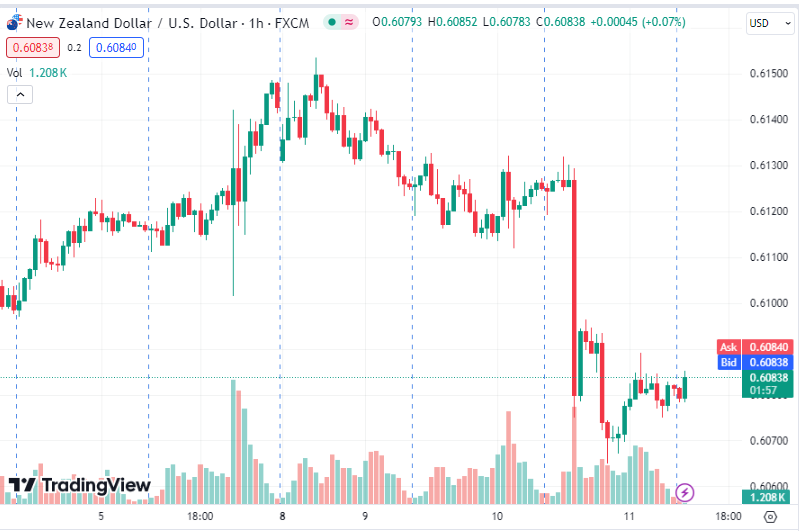Welcome to our daily market update, where we help keep you informed on the latest happenings in the world of FX.
If you have any questions or would like anything further explained, please don’t hesitate to reach out to your account manager or email info@cafx.com
Equity markets continued to rise, driven by major tech stocks like Apple and Nvidia. The bond market was relatively stable overnight, with the yield on the US 10-year bond fell 2 bps to 4.28%.
The USD had mixed performance while Fed Chair Powell’s comments to Congress did little to dissuade traders from expecting Fed rate cuts this year. Powell stated the Fed doesn’t need inflation below 2% to cut rates, but officials still have work to do. He noted the labor market has cooled “pretty significantly” and mentioned a “good ways to go” on the balance-sheet runoff. Powell also said commercial real estate does not threaten financial stability.
NZDUSD fell to 0.6080 during the local l\session yesterday due to the RBNZ’s dovish outlook, which increased market expectations for rate cuts. There’s now a 50% chance of a rate cut in August, with more than a full cut expected by September, another in November, and one more in February. Previously, the market expected a 50% chance of a cut in September, one fully priced by November, and another in February. This shift weakens the appeal of NZD due to lower yields, so the usual increase in NZD value with rising US equities did not occur.
Technically, the 200-day moving average is at 0.6075, and a key Fibonacci level is at 0.6070. If NZDUSD continues to weaken, it could reach the 0.6000 cent level. US economic data and comments will likely influence the NZD, with weaker US data being beneficial for the NZD. Locally, the upcoming NZ Consumer Price Index (CPI) next Wednesday will be important. On the upside, 0.6100 is now a resistance level, followed by 0.6142.
NZDAUD has dropped sharply, breaking through the key technical level of 0.9090. Now attention is on the 0.9000 level, which hasn’t been seen since October 2022 and could be reached due to expected NZ interest rate cuts. This currency pair usually stays within a range because the USD impacts both currencies similarly, so where it stabilizes will be important to observe. There are few reasons for the NZD to perform better than the AUD, making it more likely to drop below 90 cents. On the upside, key resistance levels are at 0.9025 and 0.9130.
NZDJPY fell by 0.8% to 98.15 following the RBNZ announcement. The Bank of Japan intends to gradually normalize its policy after years of large-scale bond purchases, which have led to the Bank owning more than 50% of outstanding Japanese Government Bonds (JGBs). The current monthly purchase rate is approximately ¥6 trillion, and a substantial reduction could reduce pressure on the yen. After a decline in June, the yields on 10-year JGBs are nearing multi-year highs at around 1.10%.
NZDGBP fell around 0.4730, which is the lowest it has been in 10 weeks. The GBP outperformed within the G10 currencies after the BOE’s chief economist made remarks about the continued presence of inflationary pressures.
Nothing major coming out on the local economic calendar today, apart from Food price inflation numbers for NZ at 10:45am. This measure declined by 0.2% from April to May 24 and will be watched to see if this backs a disinflationary story.
Here are the latest mid-market rates:
| Currency Pair | Mid-market rate |
| NZD/USD | 0.6080 |
| NZD/AUD | 0.9012 |
| NZD/JPY | 98.30 |
| NZD/CNY | 4.4336 |
| NZD/EUR | 0.5615 |
| NZD/GBP | 0.4732 |
| NZD/HKD | 4.7496 |
| NZD/SGD | 0.8205 |
NZD/USD 24 HOURS

Disclaimer:
The market update provided by Corporate Alliance FX (CAFX) is for reference only and does not constitute a bid, levy, offer or invitation to offer for the financial product, the basis for any contract or commitment, a recommendation for the purchase or sale of any investment instruments, financial, legal, tax, investment advice, investment advice or other opinions. It will not be legally liable for any consequences or losses caused by the information or content involved.
Corporate Alliance Group Pty Ltd T/A Corporate Alliance FX (CAFX) (ABN 58 167 119 226, AFSL 523351) (i.e. CAFX), CAFX independently holds the Australian Financial Services licence no. 523351 (AFSL), so CAFX is regulated by the Australian Securities and Investment Commission (ASIC) and, and although ASIC is a strictly regulatory body, it does not endorse a specific financial product. ASIC’s regulation of CAFX applies to all services under the financial licence held by CAFX, including the issuance of foreign exchange settlement, foreign exchange payments, foreign exchange risk control, hedging, market making and providing financial advice.
